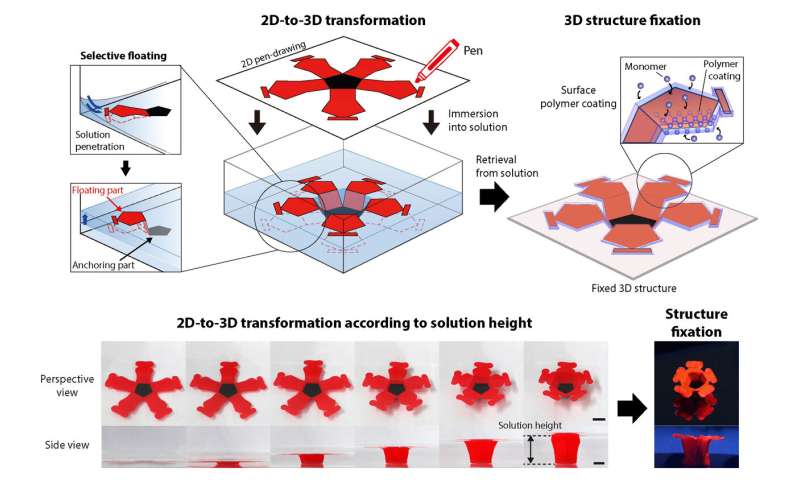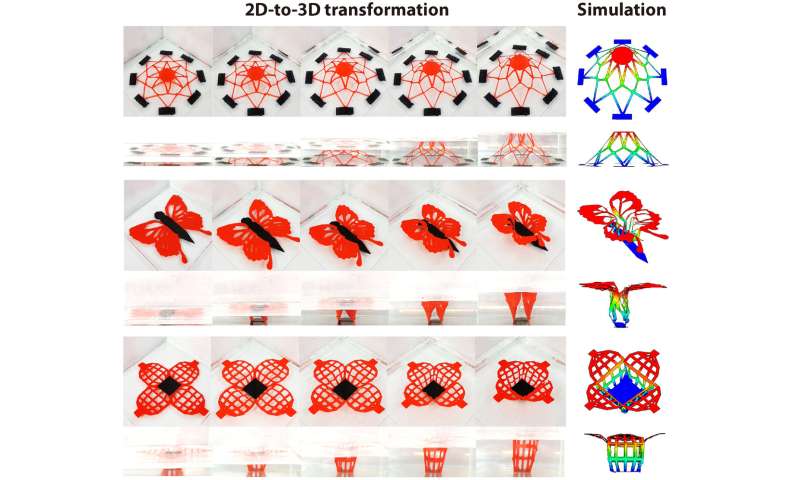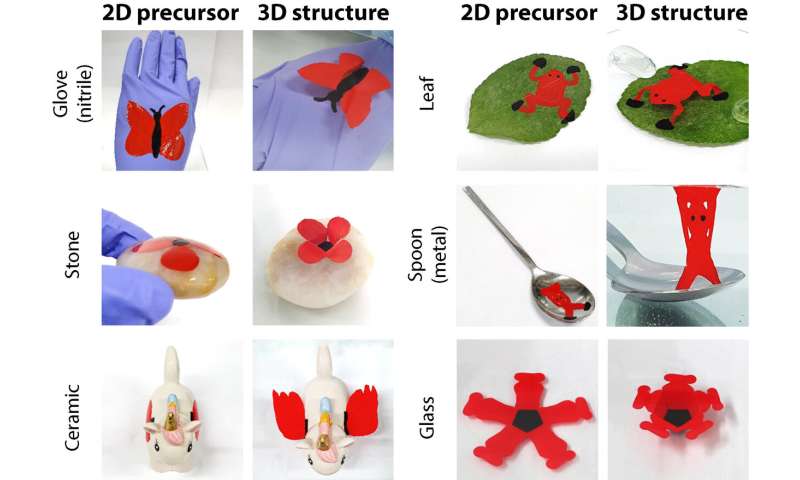March 25, 2021 report
A simple way to turn 2D drawings into 3D objects

A team of researchers affiliated with several institutions in South Korea has developed a simple method for converting 2D drawings to 3D objects. In their paper published in the journal Science Advances, the group describes their technique and possible uses for it.
Over the past several decades, 3D printing has become a popular way to create three-dimensional objects in a relatively simple manner. Such printing allows for on-demand supply of simple products. In this new effort, the researchers have developed another way to create 3D objects without the need for a printer.
The technique involves hand-drawing (or conventionally printing) a 2D image on an object using a special pen with special ink and then submerging the object in a tub of water. When the object is pulled from the water, the ink has been partly removed from the object and has formed into a 3D representation of the original image.
The ink used by the team consists of two inks. One is a surfactant compound, which is not adhesive. The other is not a surfactant, and adheres very well to a material. The pen has buttons to control which ink is expelled when drawing. To illustrate how the idea works, the researchers drew red petals on a rock and then tied them together with a black anchor in the center between them. The red surfactant became disassociated from the rock when placed in water, while the black ink kept the flower rooted to its base. The result was a black core stuck to the rock with 3D petals extending into the air.
Once the researchers tested their basic idea, they realized the resulting 3D shapes would not hold up when the object was removed from the water. To overcome this problem, they added iron microparticles to both inks and potassium persulfate to the water solution. When the object was dipped into the water, the reaction strengthened the 3D object.
-

Principle schematic of pen based 4D printing. Credit: Song et al., Sci. Adv. 2021; 7: eabf3804 -

Sequential transformations at different water level heights compared with simulated transformation results. 2D drawing is transformed into 3D structure in respon se to the solution hei ght and the 3D structure is fixed by surface polymer coating. Credit: Song et al., Sci. Adv. 2021; 7: eabf3804 -

A pen based approach allows the free style fabrication of 3D structures on various substrates even curved or natural surfaces such as stone and leaf. Credit: Song et al., Sci. Adv. 2021; 7: eabf3804
The researchers claim their technique could be modified to allow for use in manufacturing applications. They note that products could be 2D printed and shipped to clients or customers, where they would take form when dunked in the proper solution.
More information: Seo Woo Song et al. Direct 2D-to-3D transformation of pen drawings, Science Advances (2021). DOI: 10.1126/sciadv.abf3804
© 2021 Science X Network


















